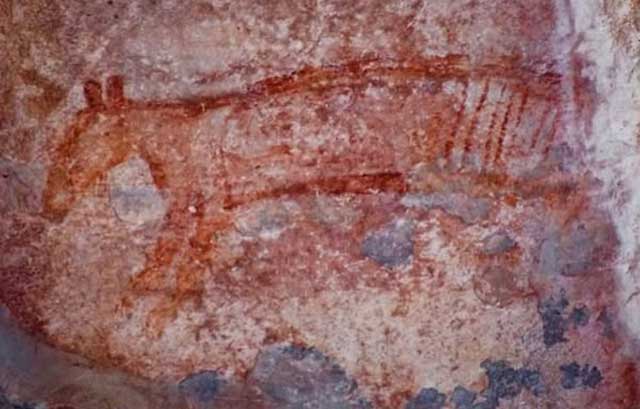Tasmanian Tiger Characteristics and Extinction: Unique Stripes and Powerful Jaws
Tasmanian Tiger: Unveiling the Mysteries of an Extinct Marsupial
Reading time : 1 minute,
Discovery Chepe Id-583-ECO
Published in
02-10-2025

The extinction of the thylacine was a tragic loss, as it marked the end of a species that had been an integral part of the Tasmanian ecosystem for thousands of years. At the time of its extinction, the thylacine had already captured the fascination of both scientists and the public.
The Tasmanian tiger, whose scientific name is Thylacinus cynocephalus, was a carnivorous marsupial that inhabited Australia, Tasmania, and New Guinea. Sadly, it became extinct in the 20th century, becoming a sad example of the loss of biodiversity on our planet.
Characteristics: The Tasmanian tiger had a wolf-like appearance, but with unique characteristics that distinguished it. Its fur was yellowish brown with dark stripes on its back and tail, earning it the name "tiger." It had a large, elongated head, with powerful jaws and sharp teeth. Its body was muscular and agile, adapted for hunting.
Habitat: The Tasmanian tiger inhabited a variety of environments, from forests and grasslands to coastal areas. It preferred areas with dense vegetation that provided shelter and camouflage.

Tasmanian Tiger: The Striped Predator of Australia's Past
Reproduction: As a marsupial, the Tasmanian tiger had a different reproductive system than placental mammals. Females had a marsupial pouch where they carried their young after birth. The young remained in the pouch until they were big enough to fend for themselves.

Diet: The Tasmanian tiger was a carnivorous predator. It fed primarily on small mammals, birds, and reptiles. It is also known to have hunted larger animals, such as kangaroos and sheep.

Tasmanian tiger rock paintings are found in various locations around Australia, especially in the Kakadu National Park region and on the Burrup Peninsula. These paintings often show the thylacine in hunting scenes or alongside other animals, suggesting that it was an important prey for Aboriginal people.
Extinction: The extinction of the Tasmanian tiger is a complex issue, influenced by a number of factors. Overhunting, habitat loss due to the expansion of agriculture and livestock farming, and the introduction of invasive species such as foxes and wild dogs were some of the causes that contributed to its disappearance.
The last known Tasmanian tiger died in a zoo in 1936. Despite efforts to find specimens in the wild, its presence has not been confirmed again. The extinction of the Tasmanian tiger is a tragedy that reminds us of the importance of protecting the planet's wildlife and ecosystems.
Although the Tasmanian tiger is extinct, its story lives on in the collective memory and in scientific research. Various de-extinction projects have been proposed with the aim of bringing back this iconic marsupial. However, de-extinction is a complex and controversial process that poses numerous ethical and scientific challenges.
The Tasmanian tiger is a symbol of the fragility of wildlife and the need to take action to protect endangered species. Its story invites us to reflect on our role in conserving biodiversity and the future of our planet.
See Also
Discovery Chepe
Most read...















